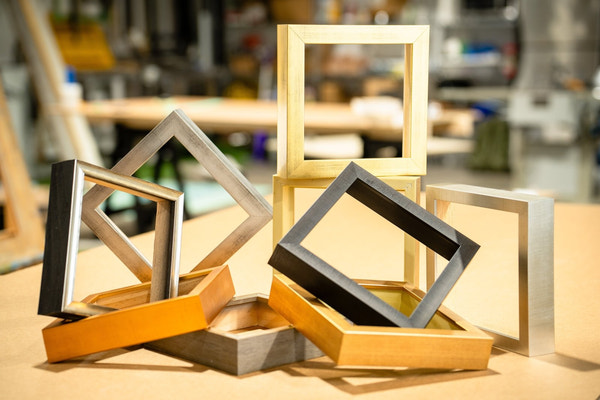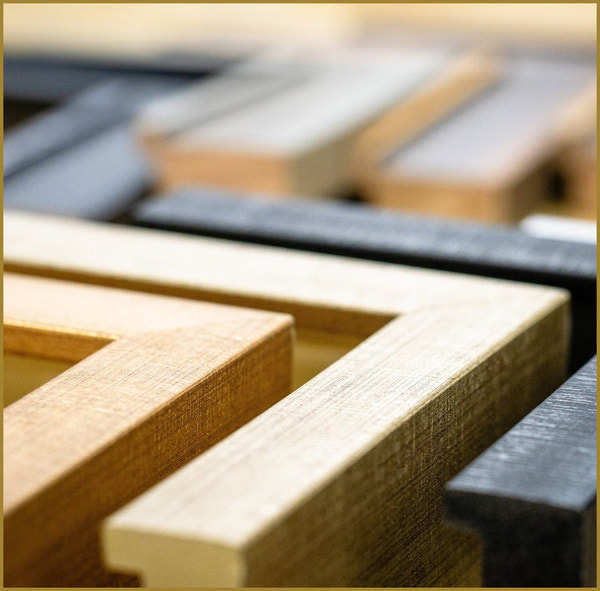The Importance of Framing Hardware: Offset Clips & D Loops
Framing hardware is essential for both protecting and displaying artwork. Whether you're an artist, gallery owner, or professional framer, using the right hardware ensures that your artwork stays secure and looks its best. In this guide, we’ll focus on two key pieces of framing hardware: offset clips and D-rings (also known as D loops). These small tools make a big impact when it comes to achieving a professional and high-quality art display.
1. Why Framing Hardware Matters
Each piece of framing hardware serves a specific purpose in securing artwork. Offset clips and D loops are critical for both mounting and hanging framed pieces. Let’s explore why these tools are so important.
Offset Clips
Offset clips are a critcal part of frmaing hardware. They are perfect for securing artwork inside traditional frames. They hold your artwork snugly without applying direct pressure to its surface, which helps preserve the piece over time. Offset clips are also ideal for canvases and panel mounts, keeping the artwork flush with the frame.
These clips come in a range of sizes, from flat to 1 1/2". You can invert them to recess the artwork deeper into the frame, which is useful when you need the piece to sit further back. If the back of the artwork protrudes, offset clips will securely hold it in place, even with uneven surfaces.
For floater frames, offset clips provide a reliable point of attachment between the frame and the artwork, ensuring the floating effect remains intact while stabilizing the artwork. Articient offers premium 2-hole offset clips to maximize versatility when mounting artwork. When selecting a hardware kit for a traditional frame, be sure to choose the correct size offset. The size depends on the difference between the frame’s rabbet (see image/diagram #3, or check the description for measurements) and the thickness of your panel, canvas, or foamcore with glass.

D-Rings (D Loops)
D-rings, or D loops, are essential for hanging framed artwork. These metal loops attach to the back of the frame, providing a secure anchor for hanging wire. D-rings help ensure that artwork hangs level on the wall. It’s especially important to use strong D-rings for heavier pieces, as they offer stability and durability. When selecting D-rings, opt for those securely wrapped through the mount for added strength.
2. Choosing the Right Framing Hardware for Your Project
Selecting the right framing hardware is crucial for a successful project. Here’s a simple guide to help you choose the best tools for your specific framing needs.
Offset Clips
Offset clips provide flexibility by coming in different sizes to match your artwork and frame depth. Here’s a quick guide to the most common sizes:
- 0" Clips: Best when the artwork is flush with the frame.
- 1/8" Clips: Ideal for thinner artwork or shallow frames.
- 1/4" Clips: A versatile option for medium-depth canvases.
- 1/2" Clips or Larger: Suitable for thicker canvases or deeper frames.
For floater frames, offset clips create a reliable attachment point between the frame and artwork. These clips securely hold the artwork in place while maintaining the signature "floating" appearance of the frame.
D-Rings (D Loops)
When choosing D-rings, consider the weight of your artwork. Smaller D-rings work well for lightweight frames, while larger, multi-hole D-rings are ideal for heavier pieces. Opt for two-hole or three-hole D-rings for a more secure hold.
Wire
Selecting the right wire is just as important as choosing clips or D-rings. Articient’s hardware kits contain #8 wire, suitable for hanging work wieghing up to 35 pounds. Be sure to match the wire’s gauge to the weight of your artwork. Heavier artwork requires thicker wire to ensure it hangs securely. When attaching the wire to the D-rings, use a sturdy knot like a lark's head for added security. Ensure the wire is taut so that the frame doesn't tilt forward when hung.
Screws
Screws are essential for attaching both offset clips and D-rings to the frame. The size and type of screws depend on the frame’s material and weight. For lightweight frames, small pan head screws work well. For heavier frames, especially floater frames, longer screws provide a stronger hold.
In floater frames, many galleries and artists prefer a direct attachment method using longer screws. This involves screwing through the frame and directly into the artwork’s stretcher bars. This method offers a more secure and tighter fit than using offset clips, preventing any shifting over time. Using 1 1/8" coarse drywall screws is a reliable option for securing larger, heavier pieces. This method results in a clean finish while ensuring the artwork remains firmly attached to the frame. Please see our how-to guide for more help installing artwork and/or spacers in a floater frame here.
Conclusion
In art framing, choosing the right hardware is key to both the security and presentation of your artwork. Offset clips and D-rings (or D loops) are vital in creating a professional and polished display. Whether you’re securing a canvas in a traditional frame or attaching a piece to a floater frame, using the correct hardware ensures your art stays securely in place for years to come. Always consider the weight and type of artwork when selecting screws, wires, and clips to achieve the perfect fit. With the right framing hardware, you’ll protect your artwork and create a stunning display that enhances its beauty.






















